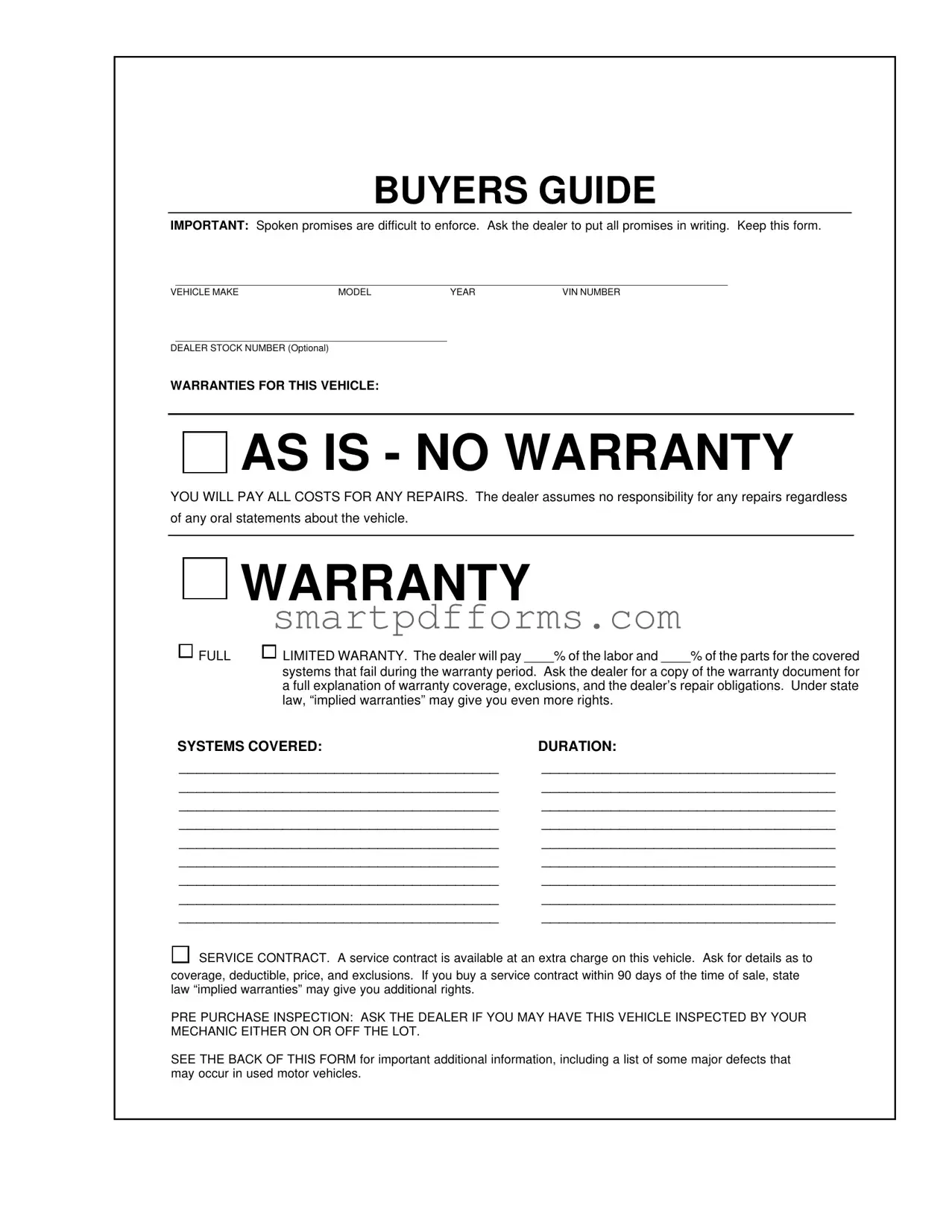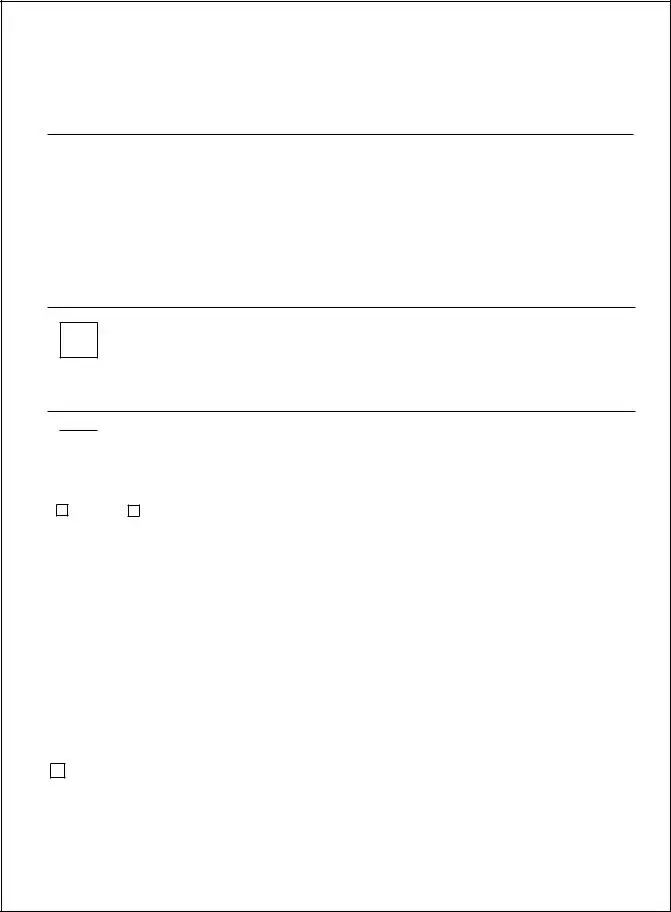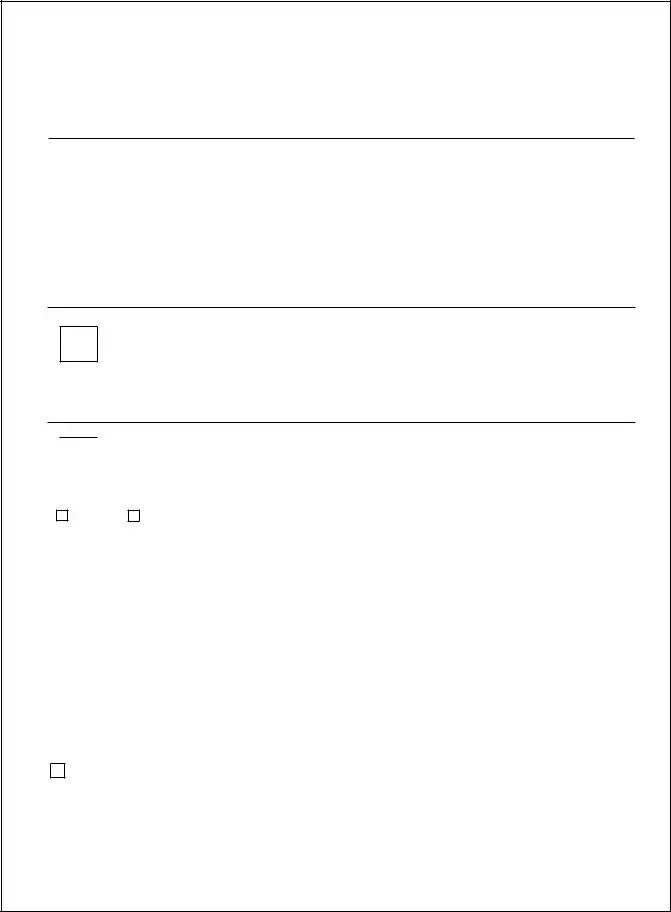Blank Buyers Guide PDF Template
The Buyers Guide form serves as a critical document in the process of purchasing a used vehicle, outlining key information about the vehicle's warranty, the dealer's obligations, and the rights of the buyer under state law. This form provides a structured layout for details such as make, model, year, VIN number, warranty coverage, and any available service contracts, ensuring transparency and understanding between the dealer and the buyer. Notably, it emphasizes the importance of written promises over verbal agreements, which can be challenging to enforce, and advises buyers on their right to have the vehicle inspected by their mechanic.
To ensure a comprehensive understanding of your rights and the vehicle's condition before making a purchase, always take the time to thoroughly review the Buyers Guide form. For detailed information on filling out this form, click the button below.



 WARRANTY
WARRANTY

 WARRANTY
WARRANTY